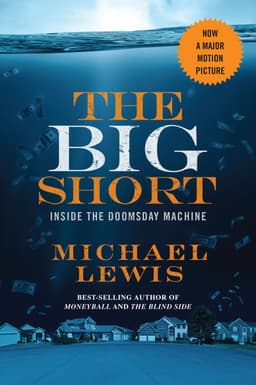
The Big Short Book Summary
Inside the Doomsday Machine
Book by Michael Lewis
Summary
In "The Big Short," Michael Lewis tells the story of the contrarian investors who predicted the subprime mortgage crisis and made a fortune betting against the bubble, exposing the greed, delusion, and perverse incentives that nearly brought down the global financial system.
Sign in to rate
Average Rating: 5
The Secret Origin Of The Subprime Mortgage Crisis
In the early 2000s, Steve Eisman, an equity analyst covering consumer finance companies, started noticing troubling trends in the subprime mortgage industry. Lenders like Household Finance were making increasingly risky loans to lower-income borrowers. With the help of his analyst Vinny Daniel, Eisman dug into the details and realized the entire industry was a house of cards built on unsustainable lending practices. They started shorting the stocks of subprime lenders.
Section: 1, Chapter: 1
Exploiting The Rating Agencies' Flawed Models
To maximize profits, lenders and investment banks exploited flaws in the rating agency models:
- Using "thin-file" FICO scores from borrowers with limited credit history
- Focusing on floating-rate loans the agencies favored vs fixed-rate
- Offsetting high-risk loans with safer ones to game the averages
This allowed them to get high ratings on subprime mortgage bonds and CDOs that were far riskier than they appeared. Wall Street insiders knew the game, but the rating agencies were oblivious.
Section: 1, Chapter: 1
How To Turn Lead Into Gold
Here's how Wall Street alchemized risky subprime loans into "triple-A" gold:
- Make increasingly risky loans to subprime borrowers
- Package loans into mortgage bonds, slice into "tranches"
- Build CDOs out of lower-rated tranches of mortgage bonds
- Get rating agencies to bless 80% of CDOs as triple-A
- Sell triple-A CDOs to investors as nearly risk-free
- Repeat steps 1-5 using unsold lower CDO tranches
Most investors were oblivious, but people like Eisman, Burry and Lippmann spotted the opportunity to short.
Section: 1, Chapter: 2
Burry's Unique Background And Investing Style
Michael Burry was a misfit in the investing world. A medical doctor with little formal finance training, he had a penchant for exhaustive research and a willingness to go against the grain. Burry's unique perspective as an industry outsider allowed him to spot the flaws in subprime mortgage bonds that Wall Street insiders were blind to. His story showcases the value of unconventional backgrounds and contrarian thinking in investing.
Section: 1, Chapter: 2
Betting Against The Housing Bubble
Ways to bet against the housing market before the crash:
- Shorting stocks of subprime lenders and homebuilders
- Buying credit default swaps on subprime mortgage bonds
- Buying puts or shorting subprime mortgage bond indices
The key was spotting the bubble early and finding asymmetric ways to bet against it with limited downside risk. This allowed investors like Eisman and Burry to make huge profits when it popped.
Section: 1, Chapter: 3
Cornwall Capital's Unconventional Origins
Cornwall Capital, a tiny hedge fund started by Charlie Ledley and Jamie Mai, was an unlikely player in the subprime trade. Operating out of a Berkeley garage with $100k in starting capital, they were the definition of a shoestring operation. But their outsider status and willingness to look where others weren't allowed them to spot the opportunity in subprime mortgage bonds. Cornwall's story shows you don't need an elite pedigree or billions in capital to make it on Wall Street - just original thinking and relentless drive.
Section: 1, Chapter: 3
The "Event-Driven" Investing Approach
Cornwall Capital's strategy for finding mispricings:
- Look for potential catalysts that could move a security's price
- Determine if the market is mispricing the probability/impact
- Structure a trade with asymmetric risk/reward if catalyst occurs
- Aim for "small loss if wrong, huge gain if right" payoff
- Avoid overpaying for the "option" on the event occurring
This approach led them to buy cheap credit default swaps on subprime mortgage bonds, which paid off big when defaults spiked.
Section: 1, Chapter: 3
The Subprime Machine Goes Into Overdrive
From 2005-2007, subprime lending exploded as Wall Street figured out how to game the system. With investors clamoring for higher-yielding bonds, lenders lowered standards, rating agencies blessed risky loans, and investment banks packaged them into complex securities. The fees were so lucrative that everyone from mortgage brokers to CDO managers was incentivized to keep the machine humming, no matter how risky the loans. Few questioned whether it was sustainable - they were too busy getting rich.
Section: 1, Chapter: 4
The Importance Of Incentives In Subprime
Every step in the subprime mortgage machine was plagued by misaligned incentives:
- Brokers were paid for volume, not loan quality
- Banks made money from securitizing loans, not holding them
- Rating agencies were paid by banks, not investors
- Investors craved yield, didn't look under the hood
When each player is compensated based on short-term profits rather than long-term sustainability, a system is bound to collapse under its own weight. Understanding incentives is key to spotting financial folly.
Section: 1, Chapter: 4
A CDO Machine Built To Blow Up
The story of Wing Chau and his Harding Advisory showed how warped the CDO business had become by 2006-07. Chau realized he could make millions by running a CDO machine that cranked out risky securities without much thought to loan quality. His incentives were totally misaligned:
- Paid big fees just for putting deals together
- No "skin in the game" as CDO manager
- Could pawn off the riskiest slices to other CDOs
Chau was the poster child for the "don't ask questions, just keep printing" mentality that inflated the subprime bubble. He thought he was a genius, but was really just surfing on a wave of cheap money that was bound to crash.
Section: 1, Chapter: 4
The Art Of Hiding Risk In Plain Sight
The key to the CDO alchemy that turned risky loans into "safe" securities:
- Pool together a bunch of subprime loans in a CDO
- Slice the CDO into different "tranches" by seniority
- Get rating agencies to bless 80% of the CDO as triple-A
- Make the CDO so complex that investors can't assess true risk
- Keep any unsold risky pieces for next CDO deal
The process worked as long as investors didn't look too closely at the sausage-making. But people like Eisman and Burry saw through the charade.
Section: 1, Chapter: 4
Eating The Banking System From Within
As the subprime bubble inflated, even the big Wall Street banks couldn't resist the allure of easy profits. They morphed from intermediaries to active speculators, writing huge checks to buy up subprime loans and CDOs. Banks like Merrill Lynch and Citigroup loaded up on the very securities they were peddling to investors, assuming the music would never stop. They had built a doomsday machine, but couldn't bring themselves to turn it off - the short-term rewards were simply too enticing.
Section: 1, Chapter: 5
An Eerie Calm Before The Storm
In early 2007, Cornwall Capital noticed an odd disconnect in the subprime market:
- Housing prices were flatlining, subprime defaults rising
- Yet subprime-backed bonds continued to rally
- Cornwall knew underlying loans were souring but market was slow to react
- They realized this was the lull before the storm and bet bigger
The delayed market response gave them a chance to load up on cheap "disaster insurance" before it was too late. Understanding market psychology let them exploit the gap between perception and reality.
Section: 1, Chapter: 5
The Tipping Point Approaches
By mid-2007, the subprime market was starting to crack but most refused to acknowledge it. Insiders like Burry and Lippmann saw clear signs of trouble - soaring default rates, plunging bond prices, massive sell orders from big firms. But in classic "boiling frog" fashion, the system was slow to react. The true believers wrote it off as a blip, clinging to the notion that "housing prices only go up." The naysayers like Burry and Eisman used the calm to double down on their bets, knowing the day of reckoning drew near.
Section: 1, Chapter: 6
Holding Firm Against A Chorus Of Doubters
By mid-2007, Burry and Eisman faced intense pushback as subprime cracks emerged:
- Burry's investors revolted when his fund showed losses, wanted out
- Eisman's colleagues thought he was crazy for predicting a housing crash
- Both men had to endure a firestorm of criticism for sticking to their guns
Lesson: Contrarian ideas are never popular in the moment. If you have conviction in your analysis, you need the mental toughness to hold firm when everyone says you're wrong. Stick to your guns if the facts are on your side.
Section: 1, Chapter: 6
The Great Treasure Hunt Begins
By early 2007, the subprime mortgage market was starting to crack, but few wanted to acknowledge it. The maverick investors who had bet against it - Burry, Eisman, Ledley & Mai - were seen as Chicken Littles. But they knew they were onto something big. The trick was finding ways to profit from their insight. They embarked on a mad scramble to load up on credit default swaps, short positions, and other contrarian bets before it was too late. It was a treasure hunt where the treasure was hidden in plain sight.
Section: 1, Chapter: 7
Vindication Comes With A Price
After years of ridicule and revolt, Mike Burry's subprime short finally paid off in 2007:
- Housing market tanked, subprime bonds collapsed
- Burry's investors made a killing but many were furious
- They couldn't grasp how he made money when market lost money
- Burry grew disillusioned by the industry's hypocrisy and closed his fund
Lesson: Being right in a bubble can be as painful as being wrong. The same delusions that make a contrarian bet profitable also ensure you'll be a pariah. Vindication is never as sweet as you imagine.
Section: 1, Chapter: 8
The Bubble Finally Bursts
In 2008, the subprime mortgage bubble finally burst, unleashing a chain reaction that brought the global financial system to its knees. The dominoes fell in rapid succession - Bear Stearns, Lehman Brothers, Merrill Lynch, AIG. The carnage exposed the rot at the heart of Wall Street - the excessive leverage, the reckless risk-taking, the corrupt incentives. For the subprime shorts, it was a bittersweet victory. They had been right, but watching the world burn was hardly cause for celebration.
Section: 1, Chapter: 9
The Price Of Greed And Stupidity
The subprime shorts offered a scathing indictment of Wall Street's sins:
- Reckless lending in pursuit of short-term profits
- Willful blindness to risks and perverse incentives
- Corruption of regulators and rating agencies
- Offloading of risks to "dumb money" investors
In the end, the banks' greed and stupidity came at a staggering price - trillions in losses, millions of jobs vaporized, the global economy in tatters. The collapse laid bare the myth of "financial innovation."
Section: 1, Chapter: 9
Profiting From A "No-Brainer"
"The collapse of the subprime mortgage market was a rare opportunity to make money from a 'no-brainer' bet. The hardest part was having the conviction to stick with the trade when everyone thought we were crazy." - Charlie Ledley
Section: 1, Chapter: 9
Resigning In Disgust After The Meltdown
After years of ridicule and doubt, Mike Burry shut down his hedge fund in disgust in 2008:
- Subprime shorts had made investors over 400% returns
- But many investors were furious and wanted to pull money
- Burry grew embittered by the industry's recklessness and greed
- Closed fund and retreated from public life, a disillusioned man
Even though he had been proven right, Burry had lost faith in the system. He realized no one wanted to face harsh truths - they just wanted to keep the casino running.
Section: 1, Chapter: 10
Related Content
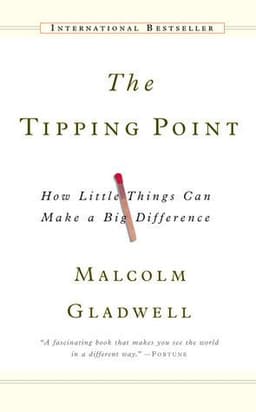
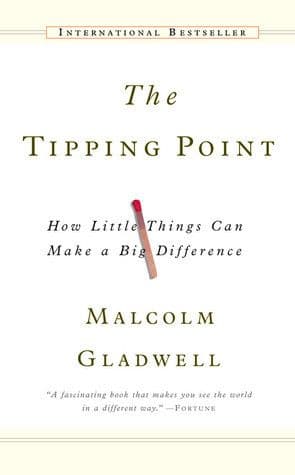
The Tipping Point Book Summary
Malcolm Gladwell
The Tipping Point reveals the hidden forces that cause social epidemics - from fashion trends to crime waves - to spread like viruses, and shows how to start and control positive epidemics of our own.
The Tipping Point reveals the hidden forces that cause social epidemics - from fashion trends to crime waves - to spread like viruses, and shows how to start and control positive epidemics of our own.
Psychology
Personal Development
Sociology
Economics
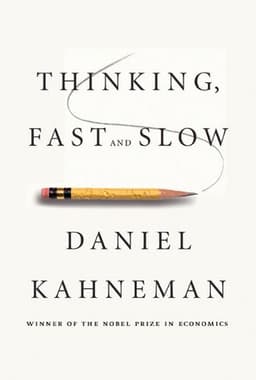
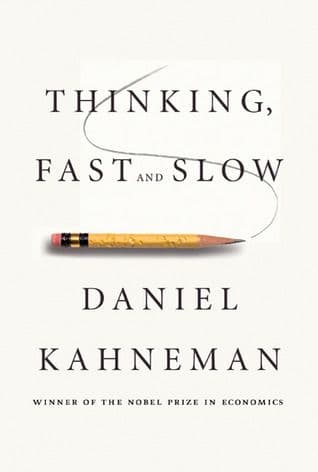
Thinking Fast and Slow Book Summary
Daniel Kahneman
Kahneman explores the two systems that drive the way we think: the intuitive, automatic System 1 and the deliberate, analytical System 2. It explores how these systems shape our judgments, decisions, and biases, revealing the surprising power of intuition and the pitfalls of overconfidence.
Kahneman explores the two systems that drive the way we think: the intuitive, automatic System 1 and the deliberate, analytical System 2. It explores how these systems shape our judgments, decisions, and biases, revealing the surprising power of intuition and the pitfalls of overconfidence.
Psychology
Personal Development
Business

